2026 Malaysia EV Road Tax Policy Analysis: Costs and Opportunities After the End of Exemptions
As December 31, 2025 approaches, electric vehicle owners in Malaysia will face a significant policy shift — the expiration of the four-year electric vehicle road tax exemption policy.
Starting from January 1, 2026, all electric vehicles will be subject to an annual road tax based on a brand-new power-based tiered tax system.
This change marks the Malaysian electric vehicle market’s transition from a policy-driven phase to a new stage of market-driven growth.

The full road tax exemption has driven Malaysia’s EV market development
Looking back at 2022, the government’s electric vehicle incentive policy sparked market enthusiasm, and the full road tax exemption was undoubtedly one of the most attractive provisions.
According to the Road Transport Department (JPJ), fully electric vehicles during this period could enjoy a 100% road tax exemption, allowing owners of popular models like the Tesla Model 3 to save thousands of ringgit annually on usage costs.
This policy effectively promoted the adoption of electric vehicles in Malaysia. As of 2025, the nationwide electric vehicle ownership has more than tripled compared to 2022.
The new tax system to be implemented in 2026 adopts a tiered calculation method based on motor power (kW), which is more detailed and reasonable compared to the 2019 old system. According to the scheme announced by the Ministry of Transport, the new tax system divides electric vehicles into multiple power ranges: the base rate for the 100-150kW range is RM180; while high-performance models exceeding 150kW will be subject to higher tiered rates. Taking the popular BYD Atto 3 (150kW) as an example, under the new system its annual road tax is RM180, compared to RM1,024 under the 2019 framework. This policy significantly reduces the financial burden on vehicle owners.
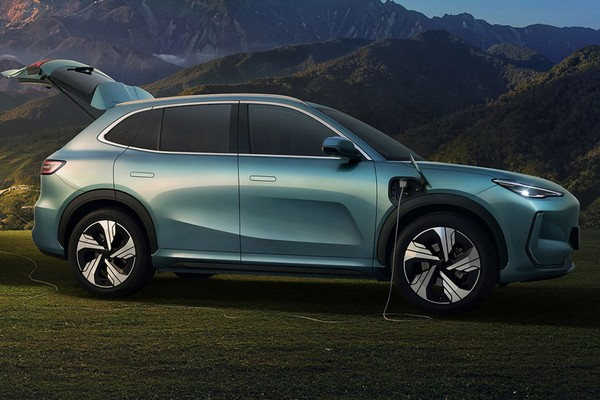
The new tax system means the cost structure of owning an electric vehicle will change
Taking the Tesla Model 3 (RWD, 208kW) as an example, starting in 2026 an annual road tax of approximately 274 MYR will be required. Although the era of zero cost has ended, it still has significant advantages compared to fuel vehicles of the same class.
It is worth noting that the tax burden varies significantly between different types of electric vehicles: entry-level electric cars with a power output of less than 100kW only need to pay 70 MYR annually, while luxury models with over 150kW, such as the Mercedes EQC 400, will be charged 4503 MYR. This reflects the policy’s inclination to support mass-market electric vehicles.
The introduction of the new policy has sparked diverse reactions
The Malaysian Automotive Association (MAA) noted that although road tax exemptions have ended, the government has extended import and excise tax relief for electric vehicles to 2027, which will continue to lower the barrier to purchase.
Local dealers stated that consumers are rushing to purchase electric vehicles before the end of 2025 to lock in the final wave of exemption benefits, and a temporary sales peak is expected in the fourth quarter.
Meanwhile, Chinese brands such as BYD and Neta are accelerating localized assembly in Malaysia to offset the impact of increased road taxes by reducing manufacturing costs.
Rapid construction of charging infrastructure alleviates concerns about EV operating costs
According to the latest data from 2025, Malaysia has built over 2,000 public charging stations, with fast-charging stations accounting for 15%. The charging network coverage in highway service areas exceeds 80%. Operators such as Tenaga Nasional Berhad (TNB) and Gentari are actively deploying smart charging networks, reducing charging times to 15-30 minutes and significantly enhancing the convenience of electric vehicle use.
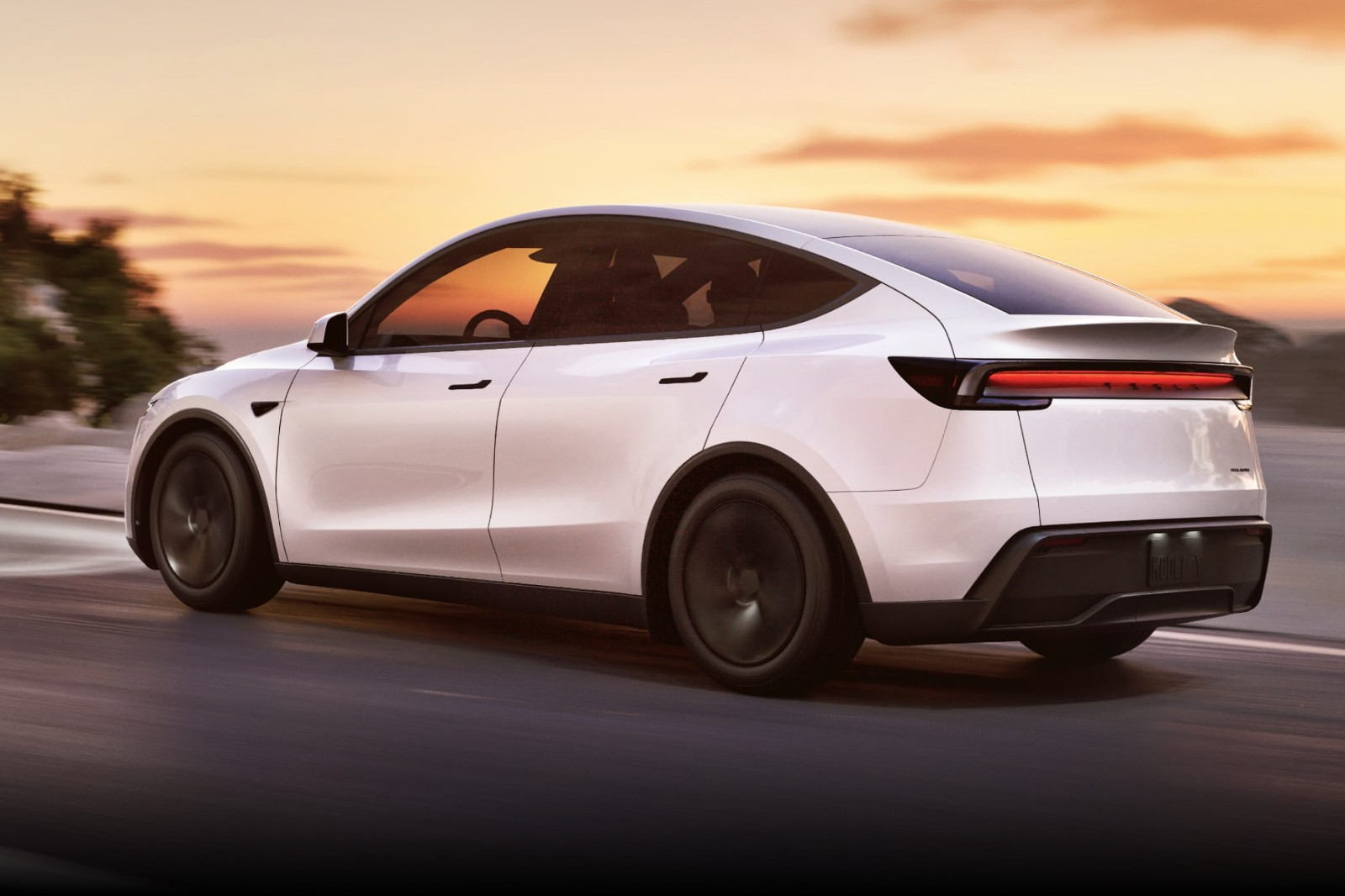
For consumers who are considering purchasing an electric vehicle, it is recommended to take a long-term view from the perspective of “total cost of ownership”.
Although road tax expenses have increased, the lower maintenance costs and energy expenses of electric vehicles remain advantageous. Calculating based on 15,000 kilometers of annual travel, the energy cost of a mid-sized electric vehicle is approximately 1,200 MYR, which is only one-third of the cost for a fuel vehicle of the same class.
The government offers low-interest loans to consumers purchasing EVs
In addition, the government has introduced the “Green Financing Fund” to provide low-interest loans for electric vehicle purchases, further reducing the financial burden of buying a car.
The implementation of the new road tax policy in 2026 marks a more mature development stage of Malaysia’s electric vehicle market.
The policy design continues to support the promotion of electric vehicles while guiding rational consumption through a differentiated tax system. For consumers, understanding the new tax structure and selecting the appropriate model based on their usage needs is crucial.
With the improvement of the charging network and technological advancements, the long-term development prospects of electric vehicles in Malaysia remain bright, and the slight adjustment in road tax will not change the green transition trend in the transportation sector.
If any infringement occurs, please contact us for deletionFollow Us
Trending News
Zeekr 9X will be launched in China on August 29 and has attracted attention due to its resemblance to the Cullinan
AshleyAug 28, 2025, 03:49 PM
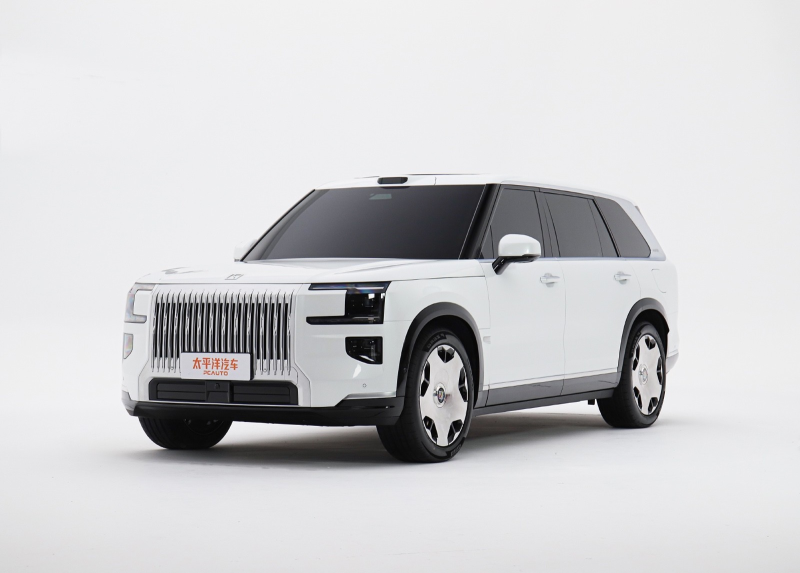
[PCauto] Geely‘s premium electric vehicle brand Zeekr announced that its first luxury flagship hybrid SUV model, the Zeekr 9X, will officially start pre-sale in China on August 29, 2025.
This full-size luxury SUV has attracted significant market attention for its resemblance to the Rolls-Royce Cullinan in appearance, as well as its luxurious interior design and high level of configuration.
Zeekr 9X Positioned as a Full-Size Luxury SUV
The Zeekr 9X dimensions are 5239/2029/1819mm, with a wheelbase of 3169mm, offering a 2+2+2 six-seat layout, and an optional four-seat executive version.
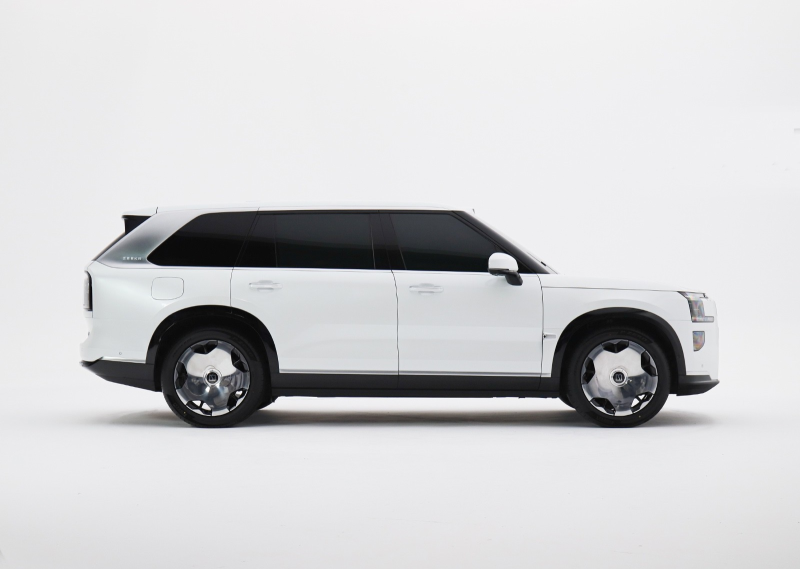
The exterior design blends classic luxury elements with a modern sense of technology. The front features a vertical chrome grille paired with split LED headlights, resembling Rolls-Royce’s “Parthenon Temple” design, showcasing a powerful visual presence.
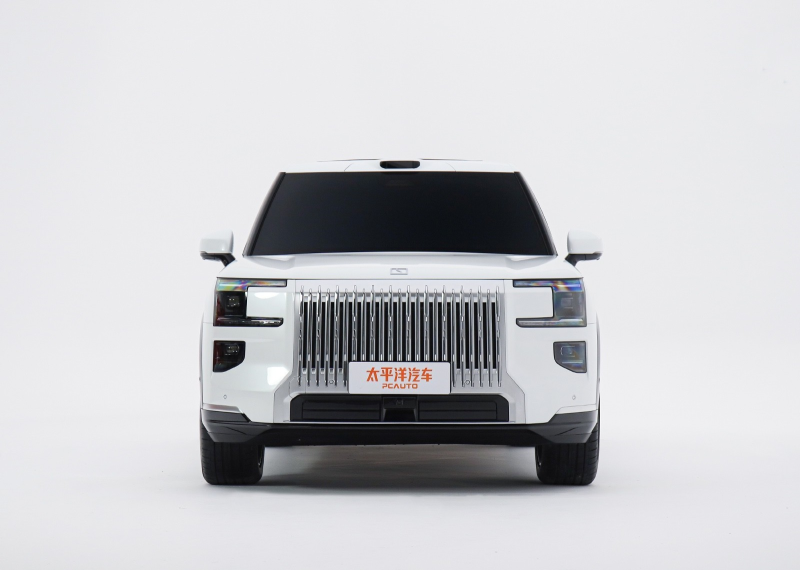
The rear is equipped with a ring-shaped through-type taillight strip, inlaid with 42,242 diamond-cut surfaces, with the “ZEEKR” lettering in the center, creating a highly distinctive look.
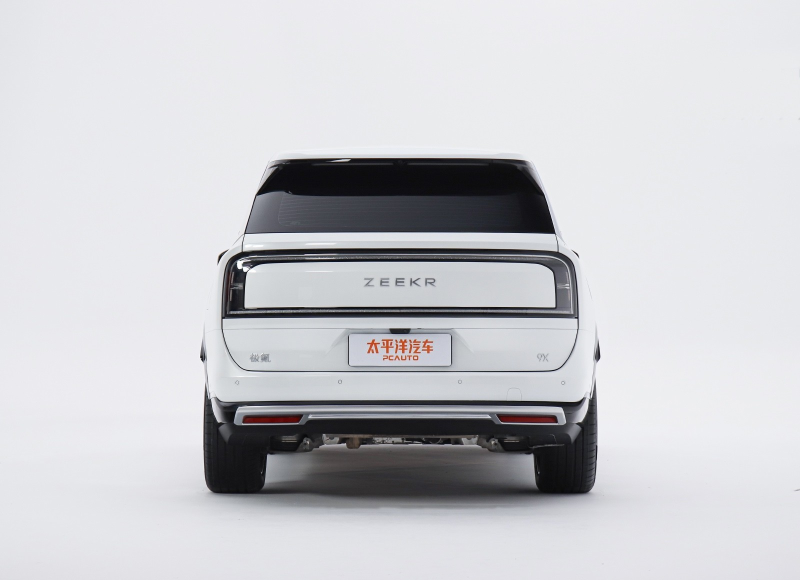
In terms of details, the new car is equipped with 22-inch mirror-forged wheels, hidden door handles, and a unique split tailgate design. The rear seats can even accommodate passengers to enjoy the scenery.
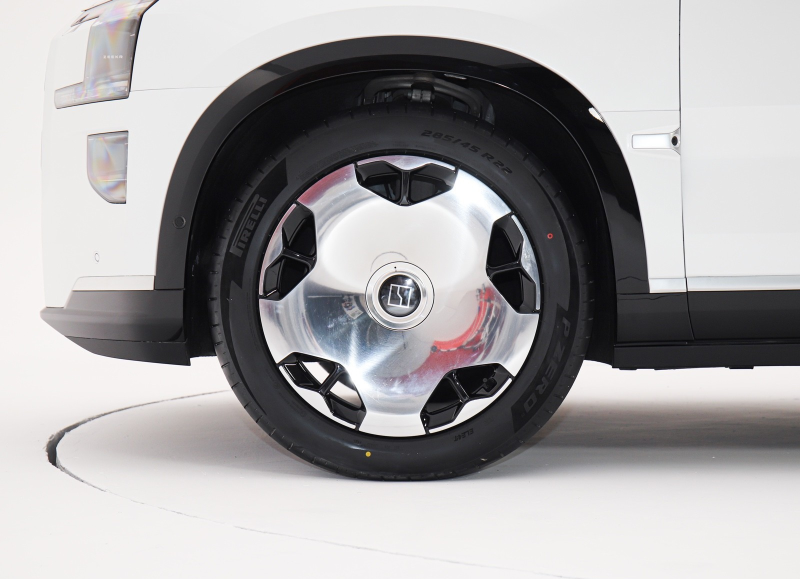
Zeekr 9X Interior Design Showcasing Ultimate Luxury
The interior extensively uses soft leather materials and features semi-aniline leather seats, decorated with Song Dynasty Guan Kiln texture wood trims and Swarovski crystal buttons.
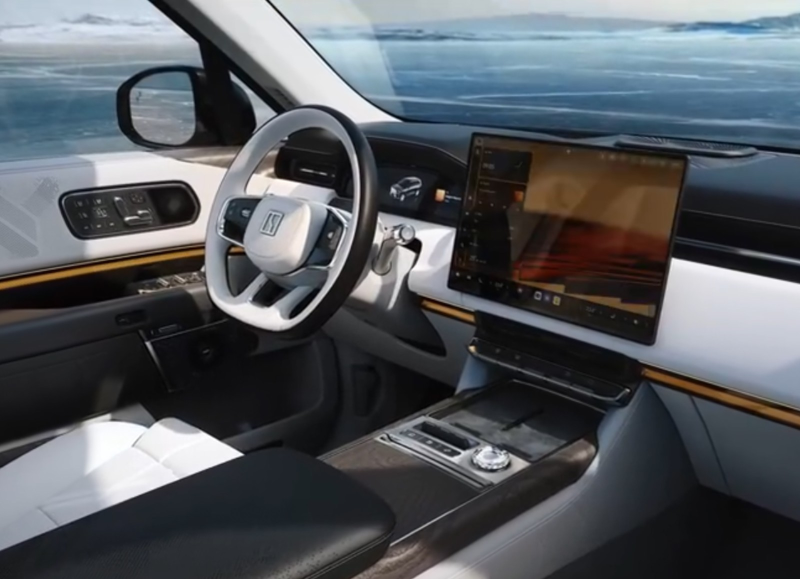
The second row is equipped with zero-gravity seats, supporting ventilation, heating, massage, and 140° recline adjustment. The headrests have built-in speaker systems.
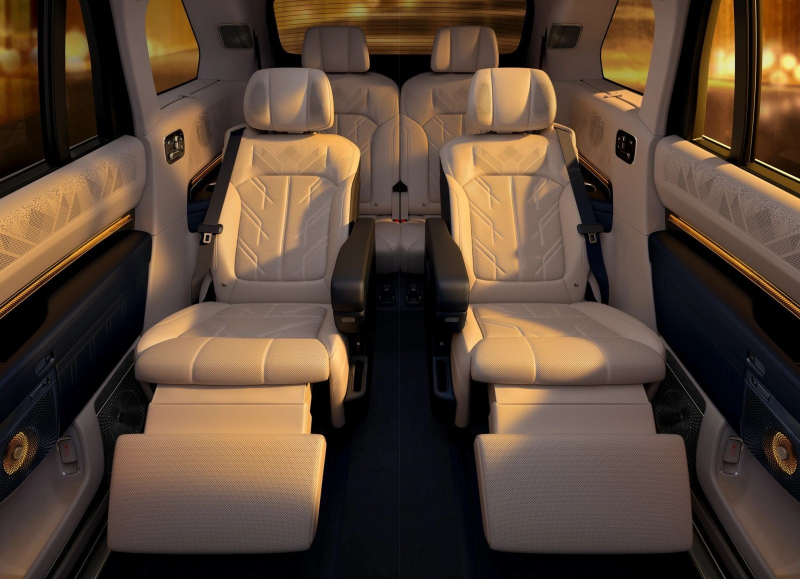
The intelligent cabin is powered by dual Qualcomm Snapdragon 8295 chips, with a total computing power of 30 TOPS, supporting four-zone voice control and visible-voice interaction.
With a 17.3-inch central control screen, a 21.6-inch curved dashboard screen, and a 15.6-inch ceiling-mounted entertainment screen forming a “technology triangle,” combined with a JBL 22-channel audio system, it provides an immersive experience for passengers.
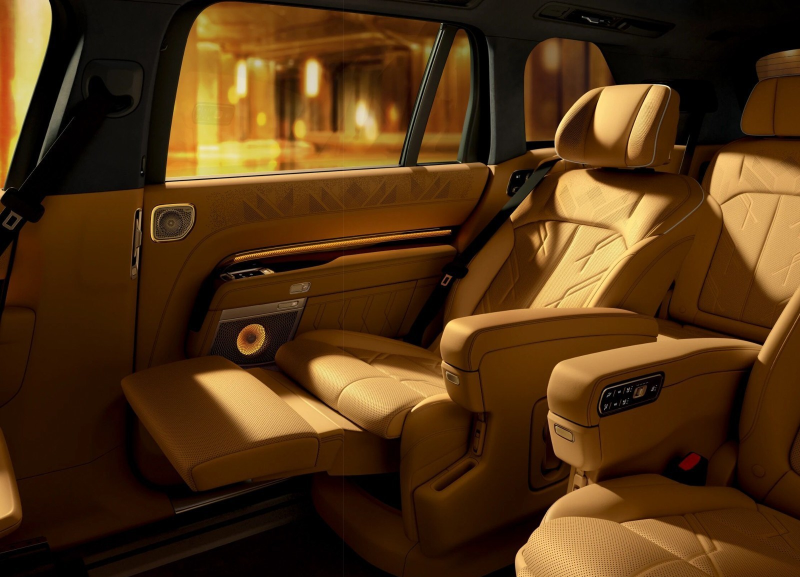
The power system is one of the biggest highlights of the Zeekr 9X
The new car is equipped with a hybrid power system, which is also Zeekr’s first use of a hybrid system.
The system consists of a 2.0T hybrid-specific engine and three motors. The engine has a thermal efficiency of 46% and a power of 205kW, with the front motor producing 290kW and the rear dual motors generating 370kW. The system’s combined power reaches 1030kW (1381 horsepower) with a peak torque of 1400N·m.
In terms of performance, the Zeekr 9X accelerates from 0-100km/h in just 3.1 seconds, with a top speed of 240km/h. Even in a discharged state, acceleration performance degradation is limited to only 0.2 seconds.
As for range, its pure electric range under the CLTC cycle reaches 380 kilometers, making it the plug-in hybrid SUV with the longest all-electric range globally. The combined range exceeds 1000 kilometers.
The Zeekr 9X adopts a 900V high-voltage platform, supporting 6C ultra-fast charging. Charging from 20% to 80% takes only 9 minutes, which is 1.5 times faster than Tesla‘s V4 Supercharging technology.
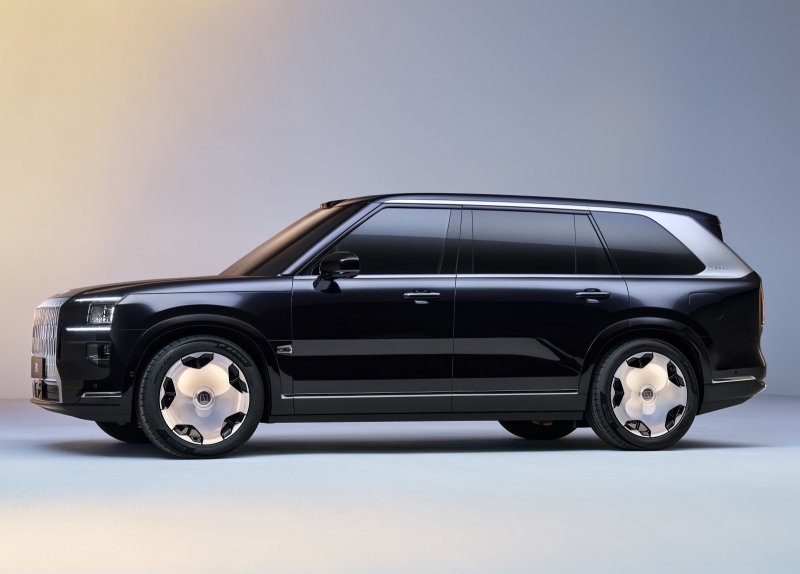
The intelligent driving system offers two versions to choose from
- The H7 version uses a single Nvidia Thor-U chip (700TOPS), supporting highway NOA and automatic parking features.
- The H9 version is equipped with dual Thor-U chips (1400TOPS) and 5 LiDAR sensors, including 1 long-range 520-line LiDAR. It supports L3-level conditional autonomous driving and can handle complex scenarios such as mechanical parking and perception through heavy rain.
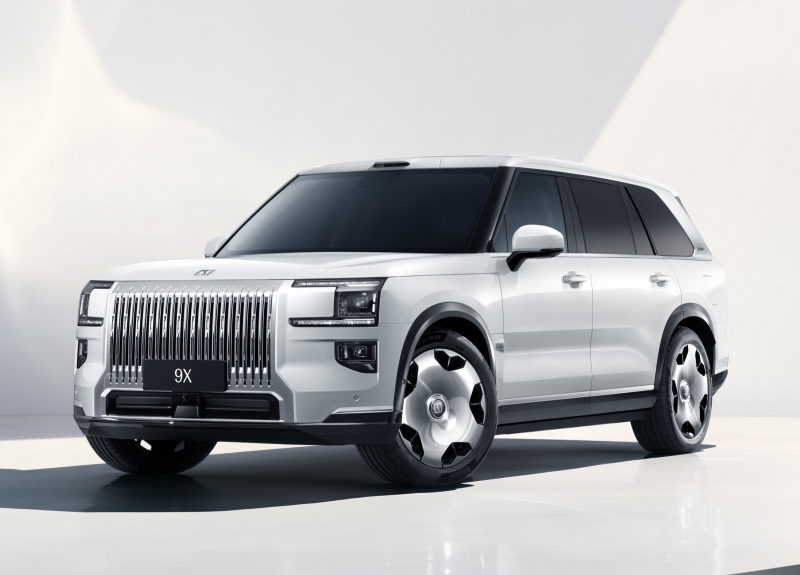
Zeekr 9X Continues the Brand’s High Standards in Safety
In terms of safety performance, the Zeekr 9X adopts a high-strength steel and aluminum alloy body structure, with a usage rate exceeding 91%. Among these, 2000MPa hot-formed steel is used in critical areas such as the A/B pillars. The vehicle’s torsional rigidity reaches 41600N·m/deg, which is the highest level in the industry.
The innovative third energy-absorbing box design can reduce collision intrusion by 20% and has passed super-national standard tests such as 50km/h pole collision and 105km/h rear collision.
The chassis is equipped with a closed dual-chamber air suspension system, dual-valve CCD electromagnetic damping, and a 48V active anti-roll bar, supporting all-terrain adaptive functionality to handle various road conditions such as deserts, snowfields, and altitudes above 5000 meters.
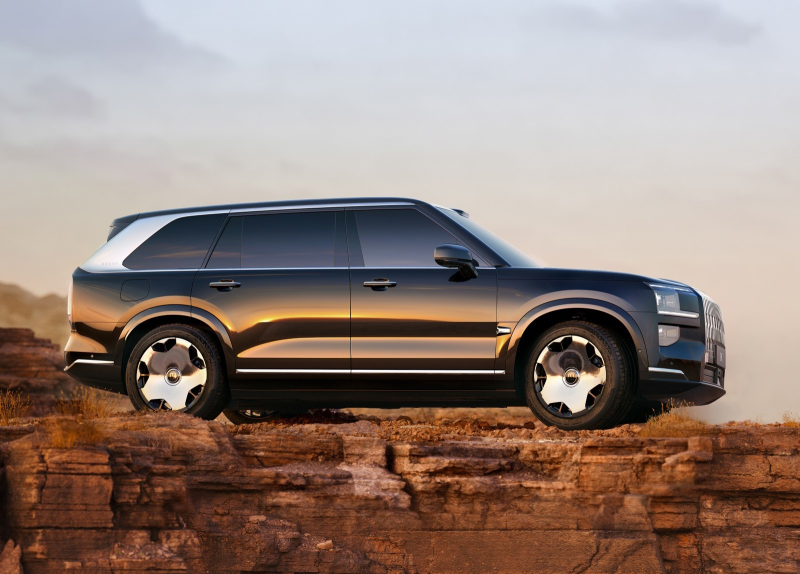
Zeekr 9X to Compete with Mercedes-Benz GLS
Zeekr 9X mainly targets high-end business professionals, family users, and tech enthusiasts, focusing on versatile “home and business” usage scenarios.
The new car directly rivals models like AITO M9, Li L9, and Mercedes-Benz GLS but relies on advantages such as a hybrid system, long-range capability, and fast charging to create differentiated competition.
In terms of price, the base model is expected to be priced in the range of 500,000 to 600,000 yuan (296,000-355,000 MYR).
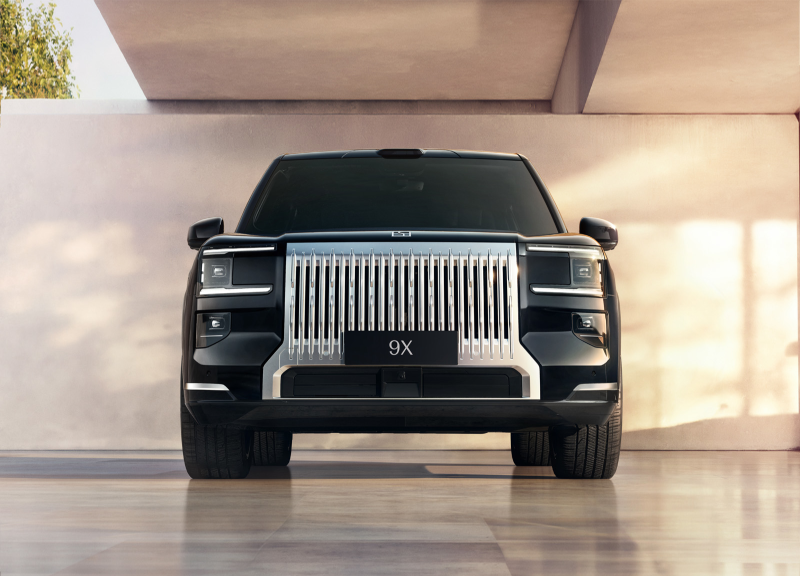
This price point also marks Zeekr’s official full-scale entry into the high-end market. With pre-sales starting on August 29, will this luxurious SUV, integrating performance, range, intelligence, and safety, be able to challenge the market position of traditional luxury brands?
If any infringement occurs, please contact us for deletionFollow Us
Trending News
2025 Toyota Aqua Released, Fuel Efficiency 35.4km/L, More Worth Buying Than Corolla[PCauto] Against the backdrop of the global automotive market’s continuous transition toward electrification, the Toyota Aqua, as a compact hybrid model from the brand, has always been renowned for its high efficiency and practicality.The 2025 Toyota Aqua has been officially unveiled recently, drawing market attention once again with multiple technological upgrades and high fuel efficiency.This model is built on the TNGA-B platform, achieving a new breakthrough in fuel consumption performanKevin WongSep 3, 2025Zeekr 9X will be launched in China on August 29 and has attracted attention due to its resemblance to the Cullinan[PCauto] Geely’s premium electric vehicle brand Zeekr announced that its first luxury flagship hybrid SUV model, the Zeekr 9X, will officially start pre-sale in China on August 29, 2025.This full-size luxury SUV has attracted significant market attention for its resemblance to the Rolls-Royce Cullinan in appearance, as well as its luxurious interior design and high level of configuration.Zeekr 9X Positioned as a Full-Size Luxury SUVThe Zeekr 9X dimensions are 5239/2029/1819mm, with a wheelbAshley



